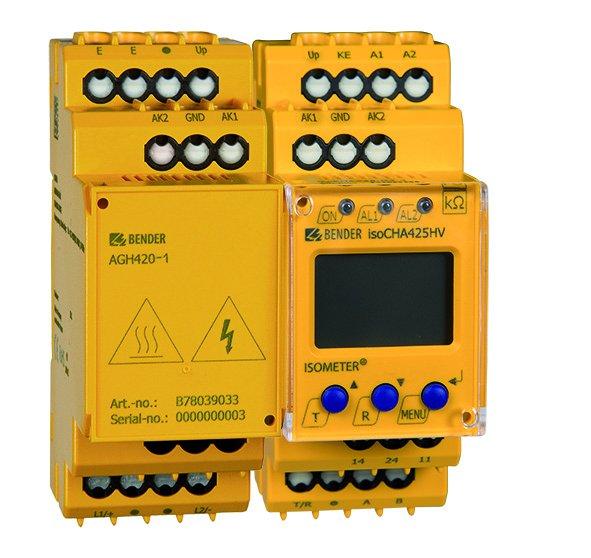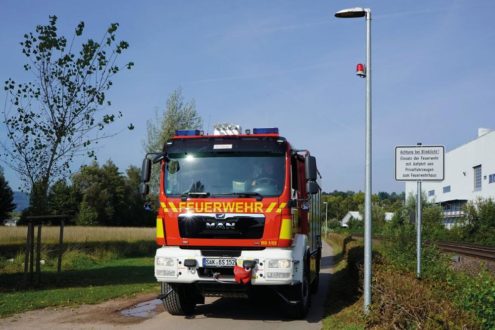
One device – two charging standards
A galvanically isolated Modbus RTU interface can be used to switch between CCS and CHAdeMO. The individual parameters are pre-stored for the respective standard and then automatically selected. The device is designed for voltages of up to 1,000 V, thus already taking ever increasing battery voltages into account.
In addition to monitoring the insulation level, the isoCHA425HV+AGH420-1 is also capable of measuring the nominal voltage during charging and generating a report if the voltage exceeds or drops below self-defined limit values. Furthermore, the system leakage capacitance of the charging station and the vehicle is monitored and, if insulation faults occur, the fault location is displayed (DC+/DC-/symmetrical). This helps the service technician to assess the status of the charging station and facilitates fault location.
If monitoring for symmetrical (two-pole) and asymmetrical (single-pole) faults is mandatory for CCS, tripping in case of asymmetrical insulation faults with a response time of ≤ 1 second is sufficient for CHAdeMO. The isoCHA425HV+AGH420-1 from Bender raises the protection level by additionally reporting two-pole insulation faults within 10 seconds in CHAdeMO mode.
This is a major benefit compared to conventional monitoring devices for DC charging stations according to CHAdeMO, as so far, they only monitor single-pole faults and do not detect symmetrical faults. The cause of symmetrical faults, however, is mainly moisture combined with dust, dirt or road salt. These factors lead to ageing of the charging cables, which generally results in a consistent drop in the insulation level, so that, in the event of symmetrical faults, there was no tripping, even though the insulation level had dropped. This makes it possible to increase the protection level in CHAdeMO mode, as symmetrical faults are also detected, which leads to significantly more safety.
Bender GmbH & Co. KG
Londorfer Str. 65
35305 Grünberg
Telefon: +49 (6401) 807-0
Telefax: +49 (6401) 807-259
http://www.bender.de
Kommunikation
Telefon: +49 (6401) 807-519
E-Mail: daniela.theiss@bender.de
![]()




